INHIBITION IN CENTRAL NERVOUS SYSTEM (CNS). PROPERTIES OF

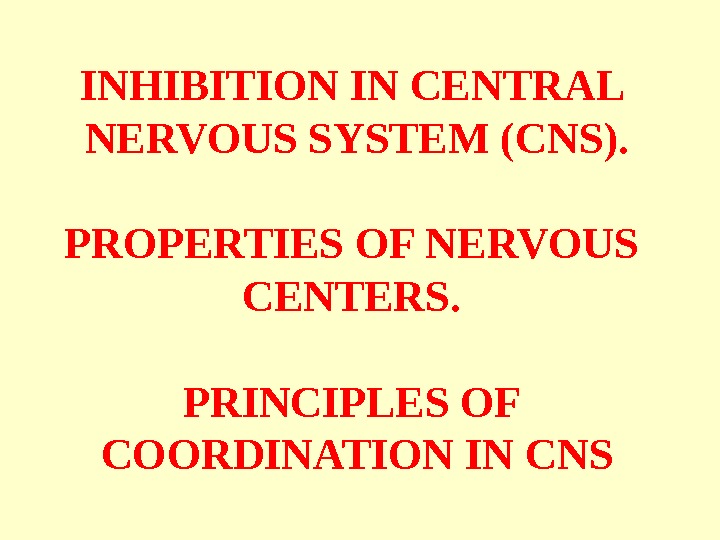
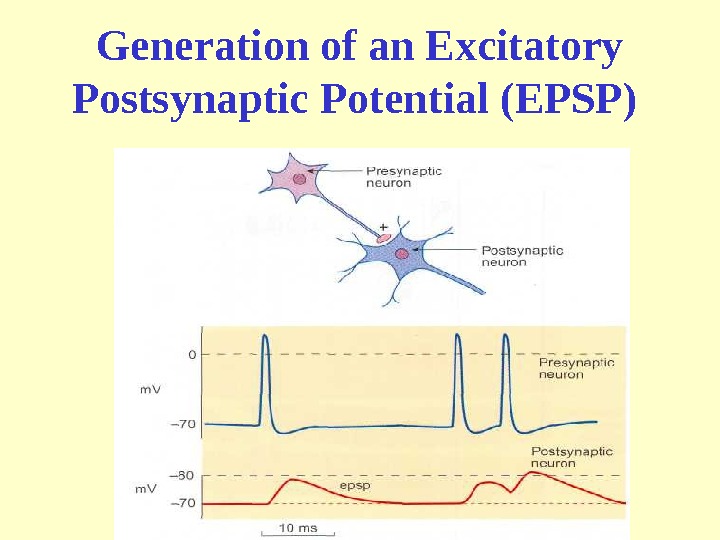
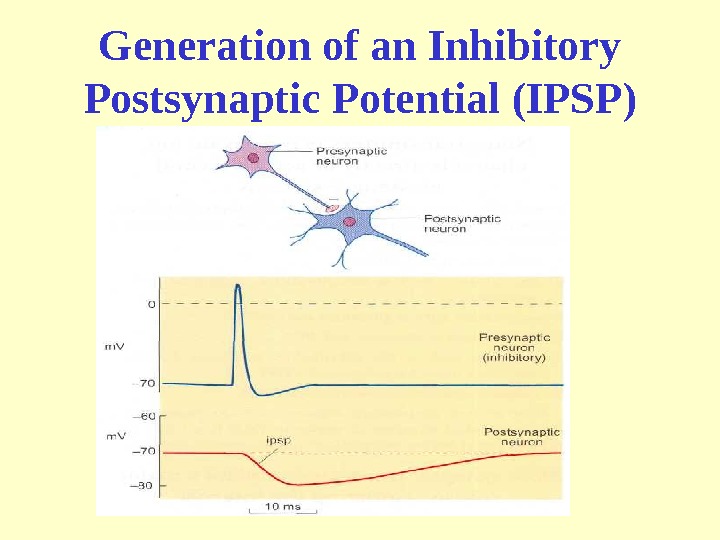
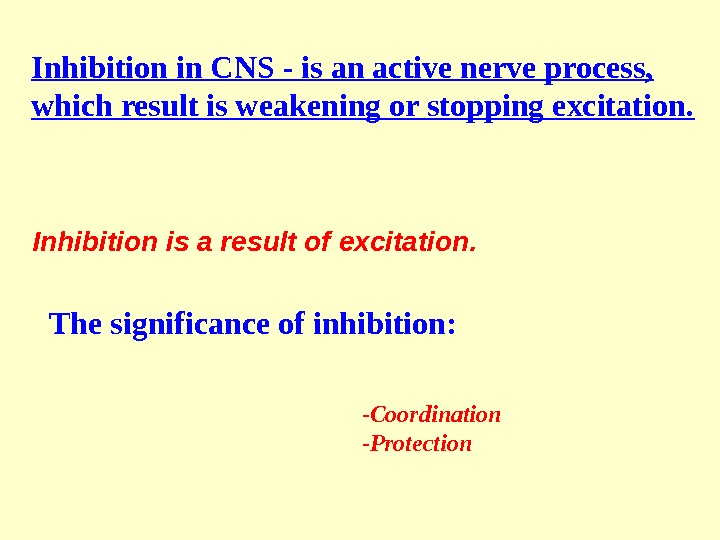
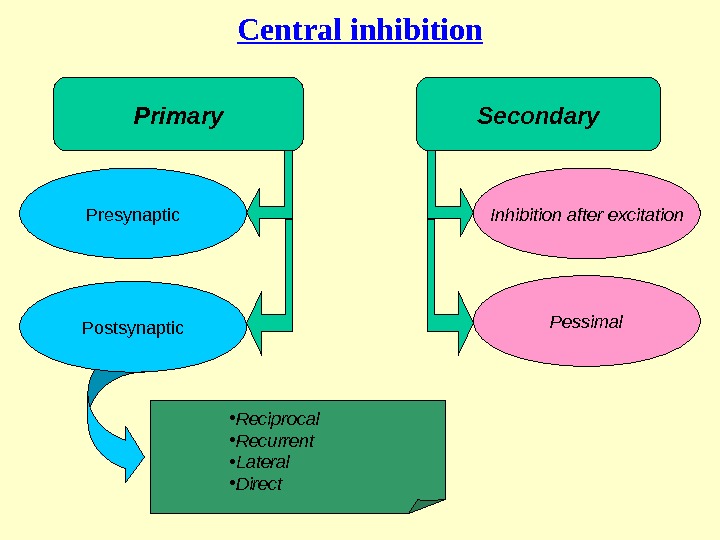


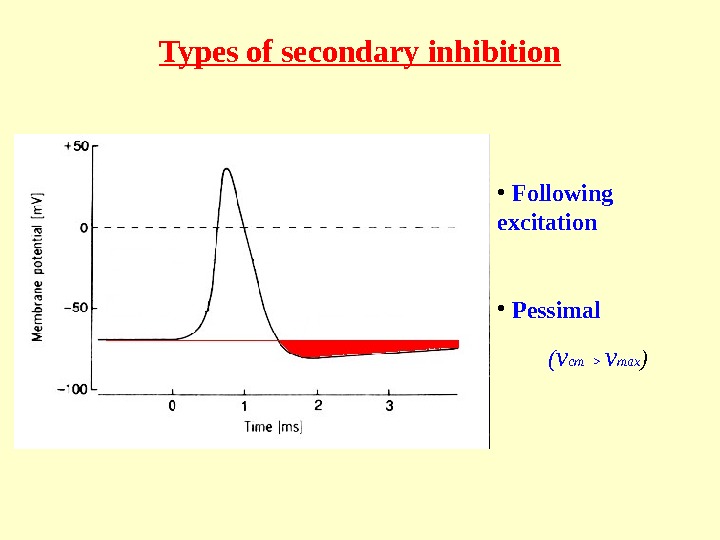

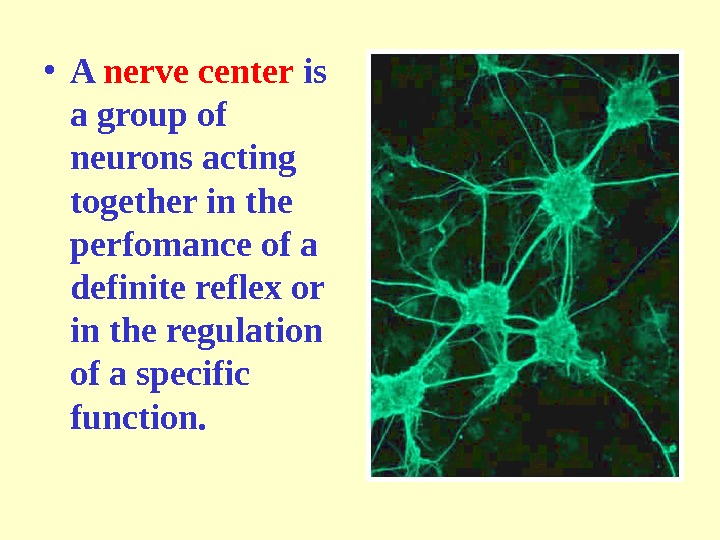
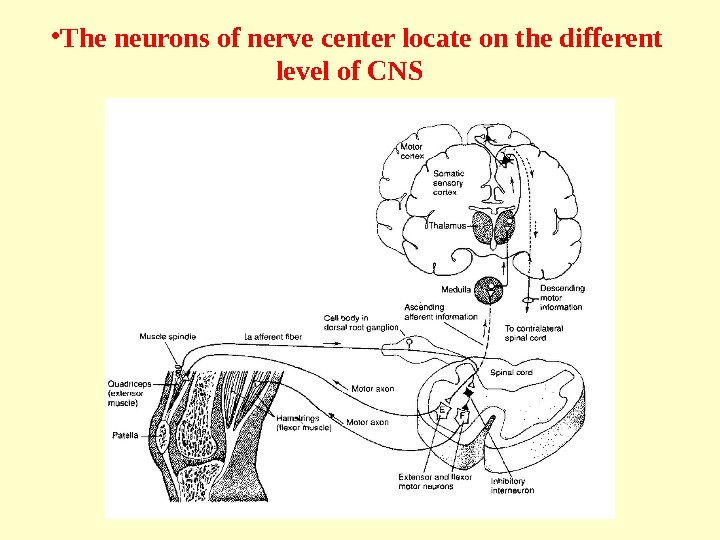

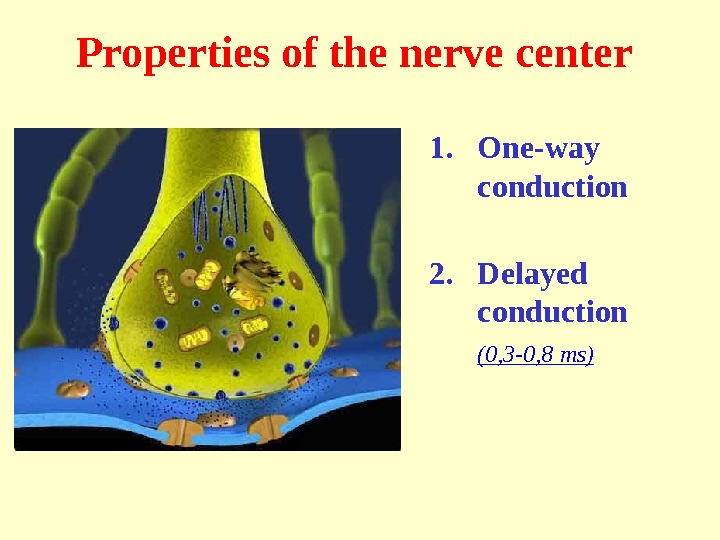
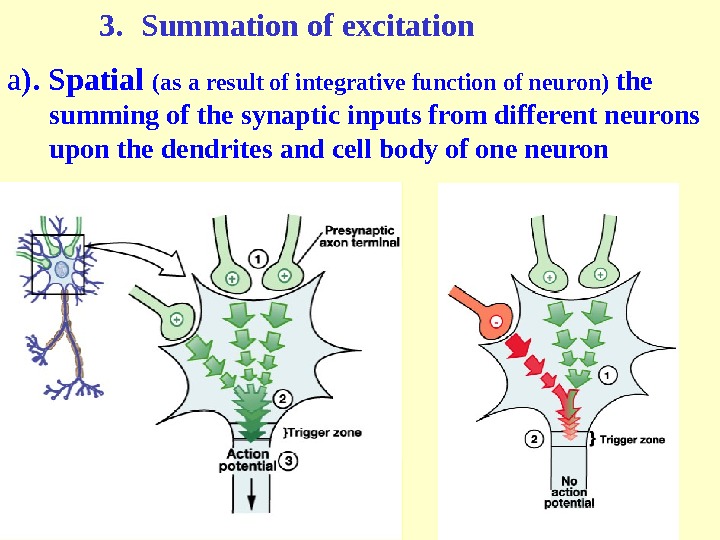
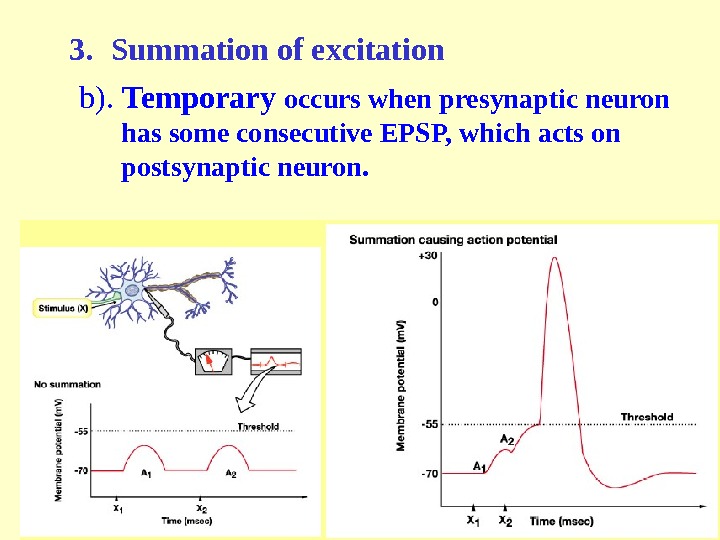

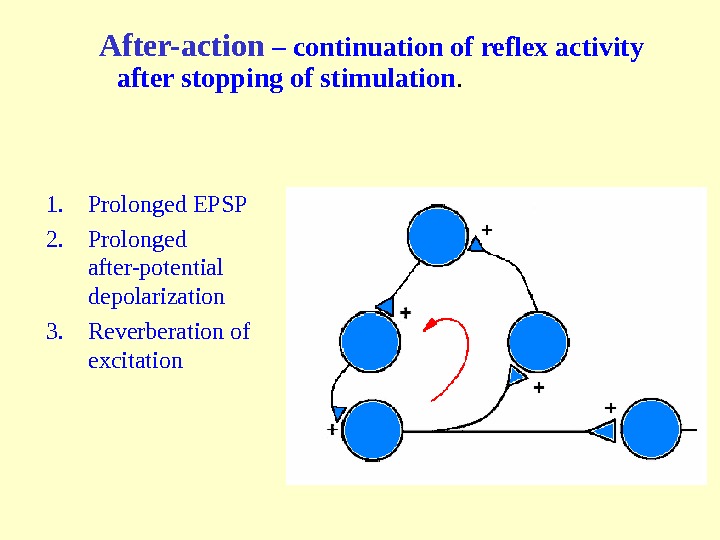
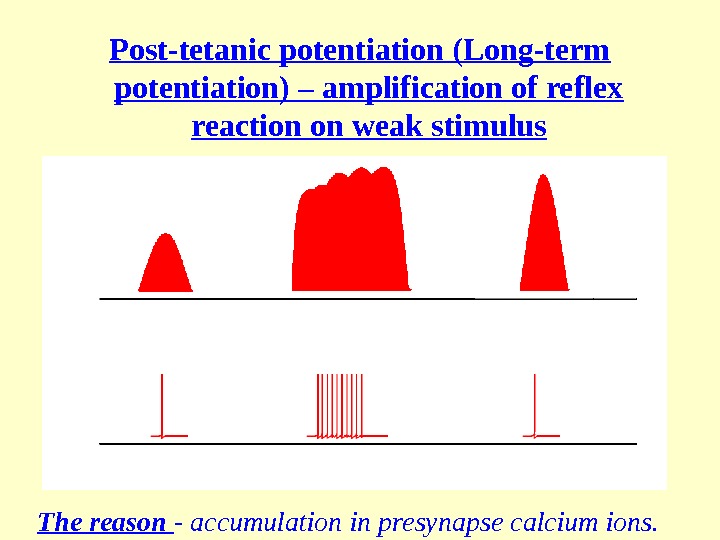
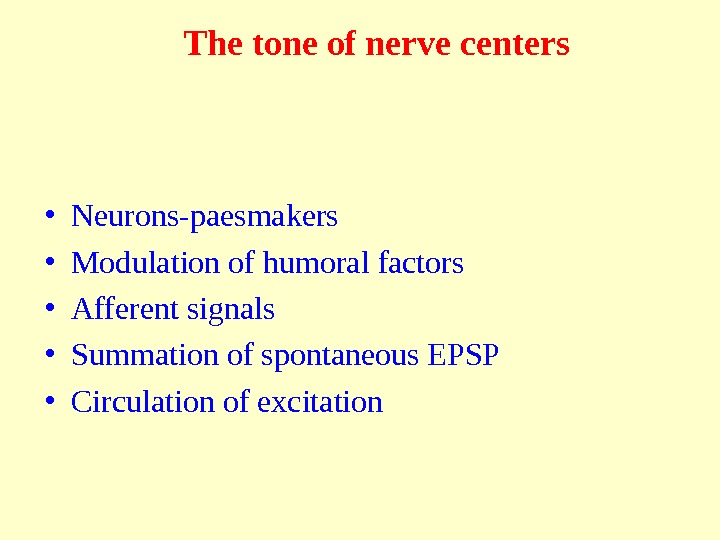
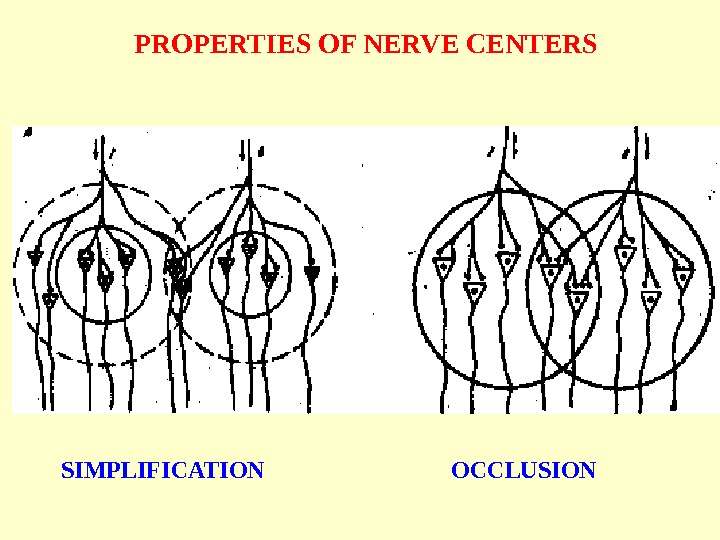
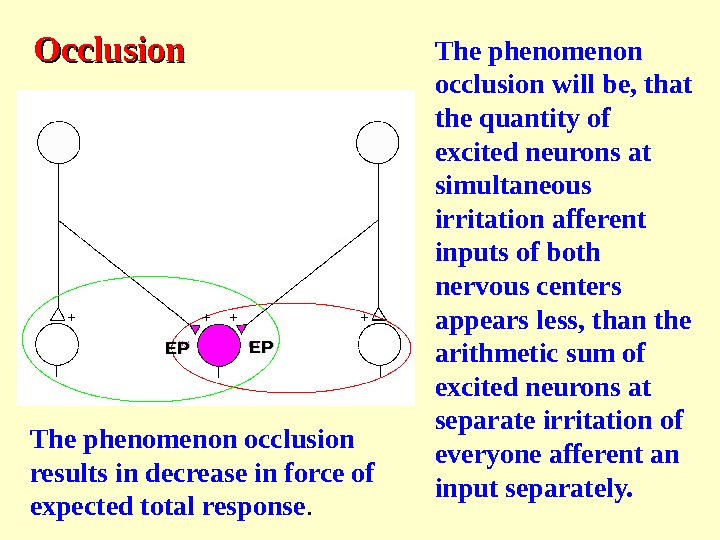
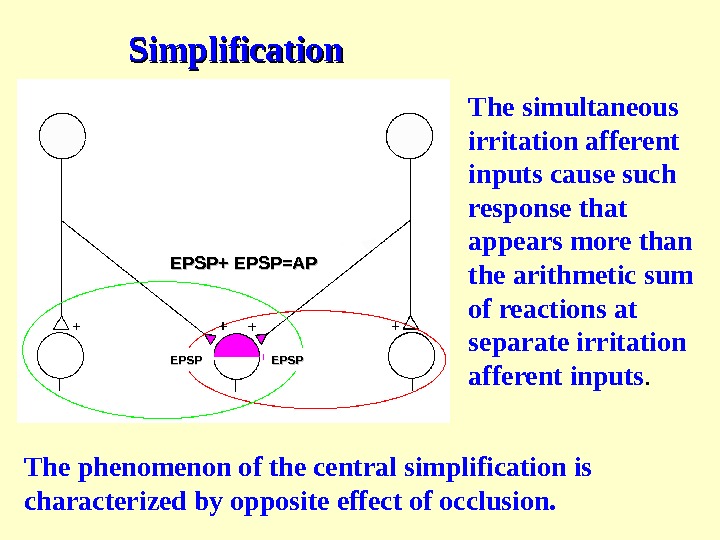
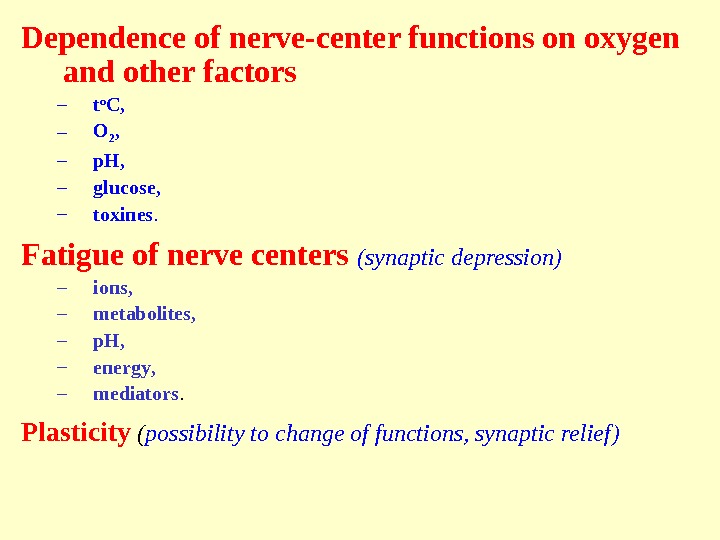
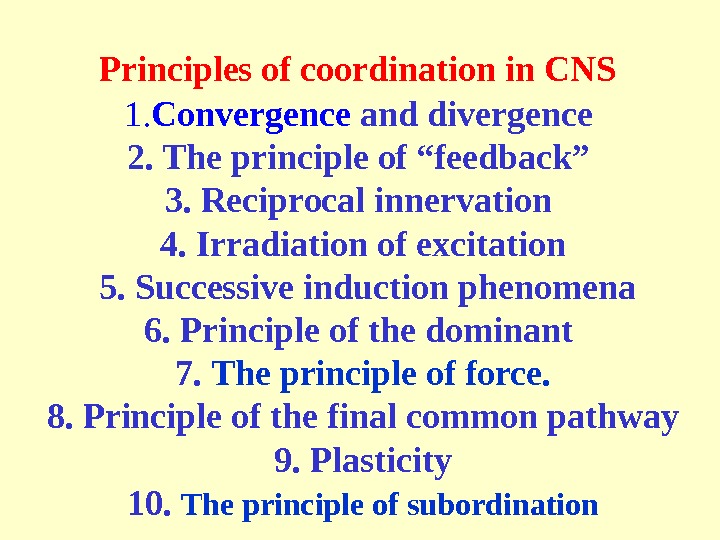
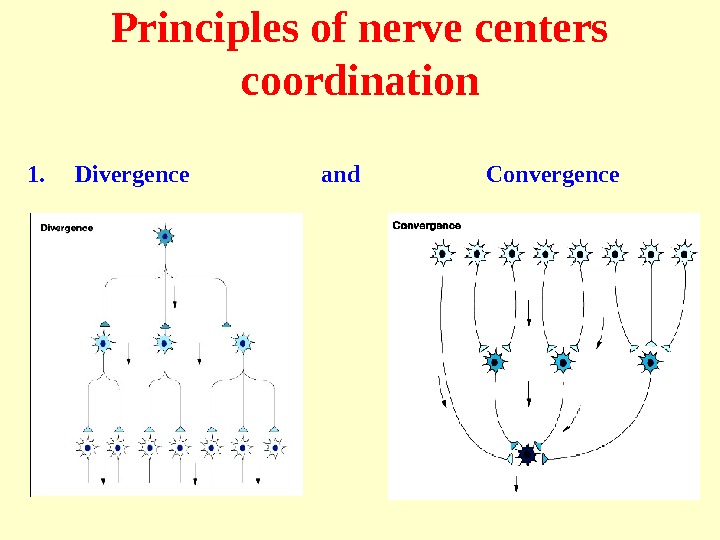
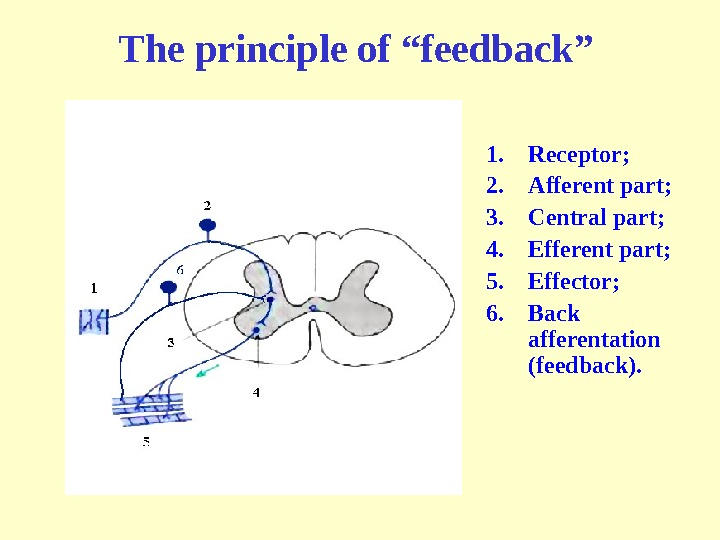
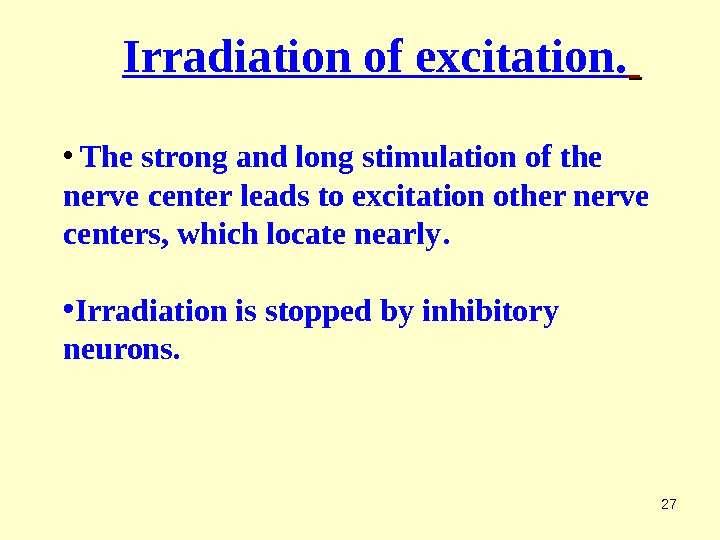
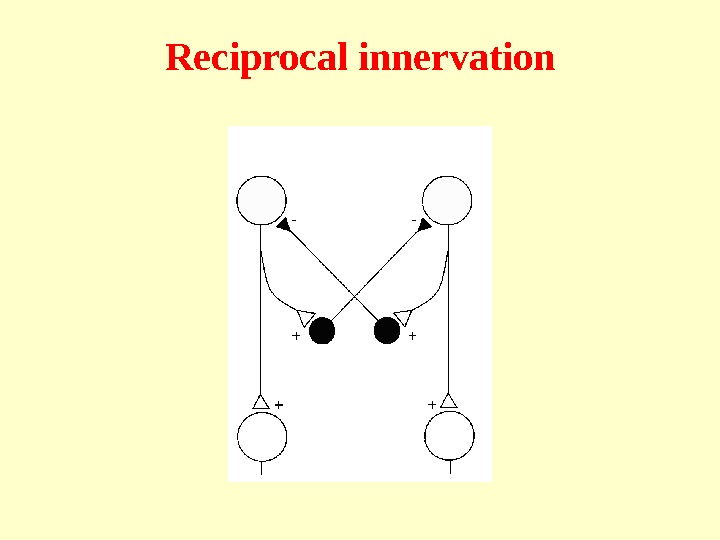
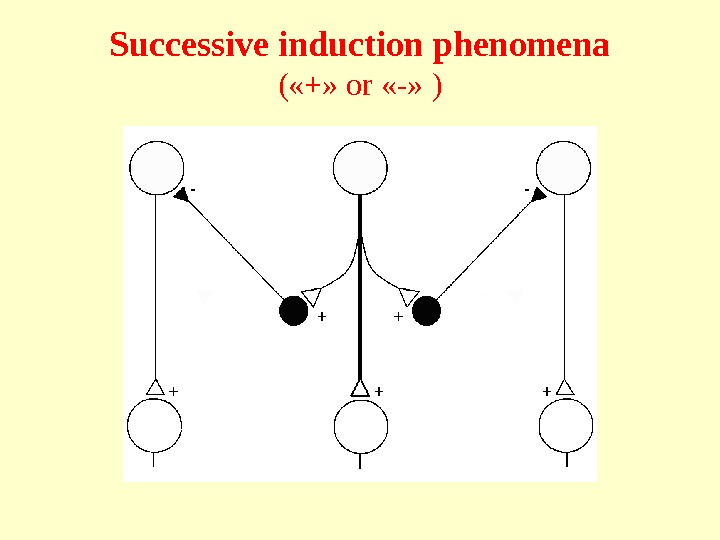
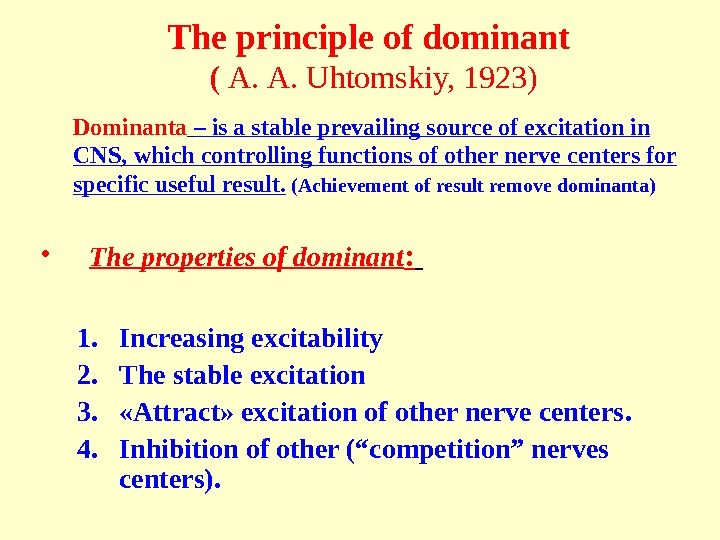
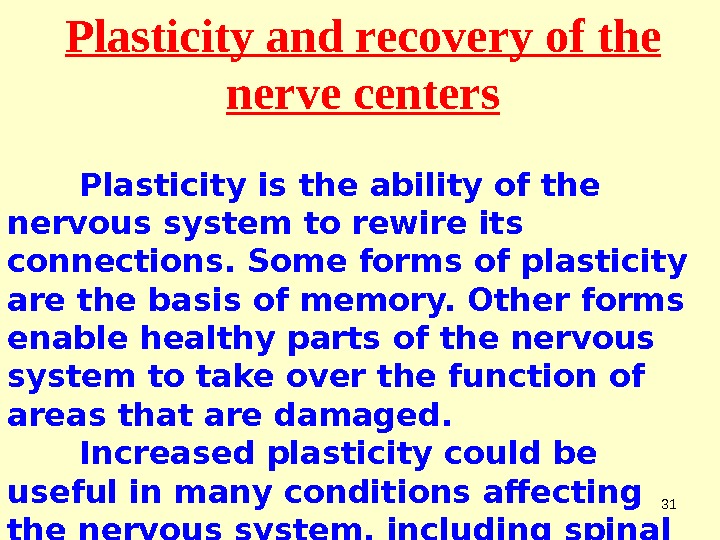
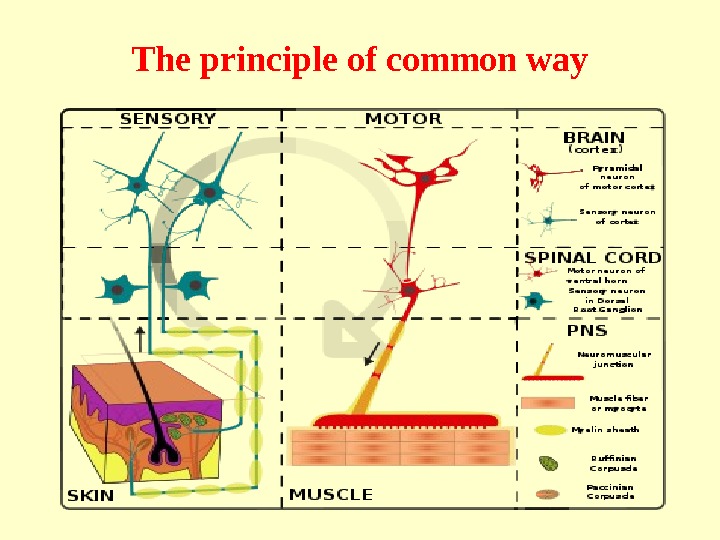
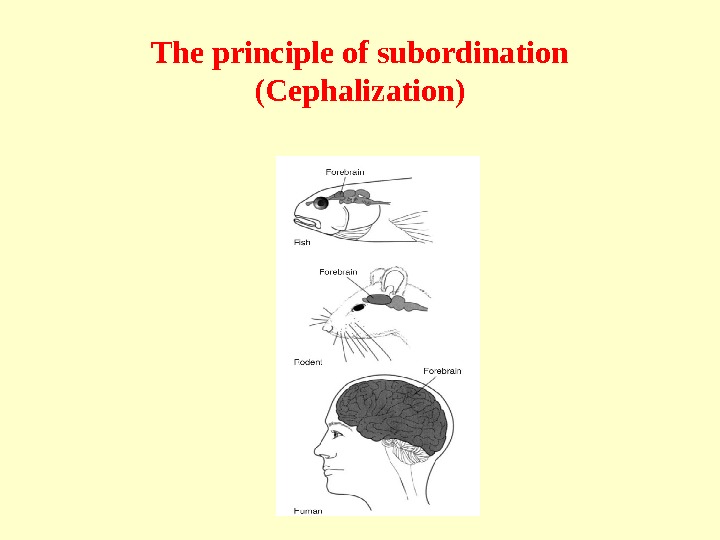
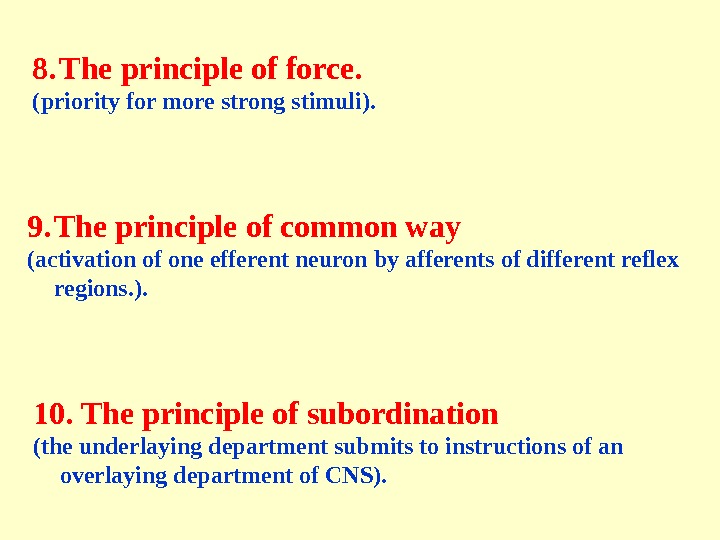
inhibition_in_cns._coordination..ppt
- Размер: 3.4 Mегабайта
- Количество слайдов: 34
Описание презентации INHIBITION IN CENTRAL NERVOUS SYSTEM (CNS). PROPERTIES OF по слайдам
 INHIBITION IN CENTRAL NERVOUS SYSTEM (CNS). PROPERTIES OF NERVOUS CENTERS. PRINCIPLES OF COORDINATION IN CNS
INHIBITION IN CENTRAL NERVOUS SYSTEM (CNS). PROPERTIES OF NERVOUS CENTERS. PRINCIPLES OF COORDINATION IN CNS
 Generation of an Excitatory P ostsynaptic Potential (EPSP)
Generation of an Excitatory P ostsynaptic Potential (EPSP)
 Generation of an Inhibitory P ostsynaptic Potential (IPSP)
Generation of an Inhibitory P ostsynaptic Potential (IPSP)
 Inhibition in CNS — is an active nerve process, which result is weakening or stopping excitation. The significance of inhibition : — Coordination — Protection. Inhibition is a result of excitation.
Inhibition in CNS — is an active nerve process, which result is weakening or stopping excitation. The significance of inhibition : — Coordination — Protection. Inhibition is a result of excitation.
 Central inhibition Inhibition after excitation Pessimal. Presynaptic • Reciprocal • Recurrent • Lateral • Direct. Primary Secondary Postsynaptic
Central inhibition Inhibition after excitation Pessimal. Presynaptic • Reciprocal • Recurrent • Lateral • Direct. Primary Secondary Postsynaptic
 Types of inhibition ( GABA , glycin ) Presynaptic Postsynaptic Direct EPSP IPSP
Types of inhibition ( GABA , glycin ) Presynaptic Postsynaptic Direct EPSP IPSP
 Types of primary postsynaptic inhibition Recurrent Lateral Reciprocal
Types of primary postsynaptic inhibition Recurrent Lateral Reciprocal
 Types of secondary inhibition • Following excitation • Pessimal ( ν ст > ν max )
Types of secondary inhibition • Following excitation • Pessimal ( ν ст > ν max )
 Secondary Inhibitions • The activity of a nerve cell can be inhibited without the participation of special inhibitory structures. . • Pessimal inhibition develops in the excitatory synapses as a result of strong depolarization of the postsynaptic membrane under the influence of nerve impulses arriving too frequently. • Inhibition following excitation — a discrete type of inhibition is that developing in a nerve cell after termination of excitation and which appears when excitation is followed by strong after-hyperpolarization of the cell membrane.
Secondary Inhibitions • The activity of a nerve cell can be inhibited without the participation of special inhibitory structures. . • Pessimal inhibition develops in the excitatory synapses as a result of strong depolarization of the postsynaptic membrane under the influence of nerve impulses arriving too frequently. • Inhibition following excitation — a discrete type of inhibition is that developing in a nerve cell after termination of excitation and which appears when excitation is followed by strong after-hyperpolarization of the cell membrane.
 • A nerve center is a group of neurons acting together in the perfomance of a definite reflex or in the regulation of a specific function.
• A nerve center is a group of neurons acting together in the perfomance of a definite reflex or in the regulation of a specific function.
 • The neurons of nerve center locate on the different level of CNS
• The neurons of nerve center locate on the different level of CNS
 THE PROPERTIES OF NERVE CENTRES 1. One-way conduction 2. Delayed conduction 3. Summation of excitation 4. Transformation of the rhythm of excitation 5. After-action 6. Long-term potentiation 7. The tone of nerve centers 8. Fatigue of nerve centers 9. Dependence of nerve-centre functions on oxygen supply
THE PROPERTIES OF NERVE CENTRES 1. One-way conduction 2. Delayed conduction 3. Summation of excitation 4. Transformation of the rhythm of excitation 5. After-action 6. Long-term potentiation 7. The tone of nerve centers 8. Fatigue of nerve centers 9. Dependence of nerve-centre functions on oxygen supply
 Properties of the nerve center 1. One-way conduction 2. Delayed conduction (0, 3 -0, 8 ms )
Properties of the nerve center 1. One-way conduction 2. Delayed conduction (0, 3 -0, 8 ms )
 3. Summation of excitation а ). Spatial (as a result of integrative function of neuron) the summing of the synaptic inputs from different neurons upon the dendrites and cell body of one neuron
3. Summation of excitation а ). Spatial (as a result of integrative function of neuron) the summing of the synaptic inputs from different neurons upon the dendrites and cell body of one neuron
 3. Summation of excitation b ). Temporary occurs when presynaptic neuron has some consecutive EPSP, which acts on postsynaptic neuron.
3. Summation of excitation b ). Temporary occurs when presynaptic neuron has some consecutive EPSP, which acts on postsynaptic neuron.
 Transformation of rhythm – is change of action potentials frequency after their passage through synapse or neural center. Biological sense of transformation is : 1) amplification of the important signal for an organism; 2) reduction of a insignificant signal for an organism; 3) the coordinated activity of two different neurons in a reflex arch.
Transformation of rhythm – is change of action potentials frequency after their passage through synapse or neural center. Biological sense of transformation is : 1) amplification of the important signal for an organism; 2) reduction of a insignificant signal for an organism; 3) the coordinated activity of two different neurons in a reflex arch.
 After-action – continuation of reflex activity after stopping of stimulation. 1. Prolonged EPSP 2. Prolonged after-potential depolarization 3. Reverberation of excitation
After-action – continuation of reflex activity after stopping of stimulation. 1. Prolonged EPSP 2. Prolonged after-potential depolarization 3. Reverberation of excitation
 Post-tetanic potentiation (Long-term potentiation) – amplification of reflex reaction on weak stimulus The reason — accumulation in presynapse calcium ions.
Post-tetanic potentiation (Long-term potentiation) – amplification of reflex reaction on weak stimulus The reason — accumulation in presynapse calcium ions.
 • Neurons-paesmakers • Modulation of humoral factors • Afferent signals • Summation of spontaneous EPSP • Circulation of excitation The tone of nerve centers
• Neurons-paesmakers • Modulation of humoral factors • Afferent signals • Summation of spontaneous EPSP • Circulation of excitation The tone of nerve centers
 PROPERTIES OF NERVE CENTERS SIMPLIFICATION OCCLUSION
PROPERTIES OF NERVE CENTERS SIMPLIFICATION OCCLUSION
 OO cclusion The phenomenon occlusion will be, that the quantity of excited neurons at simultaneous irritation afferent inputs of both nervous centers appears less, than the arithmetic sum of excited neurons at separate irritation of everyone afferent an input separately. The phenomenon occlusion results in decrease in force of expected total response. EPEP
OO cclusion The phenomenon occlusion will be, that the quantity of excited neurons at simultaneous irritation afferent inputs of both nervous centers appears less, than the arithmetic sum of excited neurons at separate irritation of everyone afferent an input separately. The phenomenon occlusion results in decrease in force of expected total response. EPEP
 SS implification EPSP+ EPSP=AP EPSPEPSP The simultaneous irritation afferent inputs cause such response that appears more than the arithmetic sum of reactions at separate irritation afferent inputs. The phenomenon of the central simplification is characterized by opposite effect of occlusion.
SS implification EPSP+ EPSP=AP EPSPEPSP The simultaneous irritation afferent inputs cause such response that appears more than the arithmetic sum of reactions at separate irritation afferent inputs. The phenomenon of the central simplification is characterized by opposite effect of occlusion.
 Dependence of nerve-center functions on oxygen and other factors – t o C , – О 2 , – р. Н, – glucose , – toxines. Fatigue of nerve centers ( synaptic depression ) – ions , – metabolites , – р. Н, – energy , – mediators. Plasticity ( possibility to change of functions, synaptic relief )
Dependence of nerve-center functions on oxygen and other factors – t o C , – О 2 , – р. Н, – glucose , – toxines. Fatigue of nerve centers ( synaptic depression ) – ions , – metabolites , – р. Н, – energy , – mediators. Plasticity ( possibility to change of functions, synaptic relief )
 Principles of coordination in CNS 1. Convergence and divergence 2. The principle of “feedback” 3. Reciprocal innervation 4. Irradiation of excitation 5. Successive induction phenomena 6. Principle of the dominant 7. The principle of force. 8. Principle of the final common pathway 9. Plasticity 10. The principle of subordination
Principles of coordination in CNS 1. Convergence and divergence 2. The principle of “feedback” 3. Reciprocal innervation 4. Irradiation of excitation 5. Successive induction phenomena 6. Principle of the dominant 7. The principle of force. 8. Principle of the final common pathway 9. Plasticity 10. The principle of subordination
 Principles of nerve centers coordination 1. Divergence and Convergence
Principles of nerve centers coordination 1. Divergence and Convergence
 The principle of “feedback” 1. Receptor ; 2. Afferent part ; 3. Central part ; 4. Efferent part ; 5. Effector ; 6. Back afferentation (feedback).
The principle of “feedback” 1. Receptor ; 2. Afferent part ; 3. Central part ; 4. Efferent part ; 5. Effector ; 6. Back afferentation (feedback).
 27 Irradiation of excitation. • The strong and long stimulation of the nerv e center leads to excitation other nerve centers, which locate nearly. • Irradiation is s topped by inhibitory neurons.
27 Irradiation of excitation. • The strong and long stimulation of the nerv e center leads to excitation other nerve centers, which locate nearly. • Irradiation is s topped by inhibitory neurons.
 Reciprocal innervation
Reciprocal innervation
 Successive induction phenomena ( «+» or «-» )
Successive induction phenomena ( «+» or «-» )
 The principle of dominant ( А. А. Uhtomskiy, 1923) • The properties of dominant : 1. Increasing excitability 2. The stable excitation 3. « Attract » excitation of other nerve centers. 4. Inhibition of other (“competition” nerves centers). Dominanta – is a stable prevailing source of excitation in CNS , which controlling functions of other nerve centers for specific useful result. ( Achievement of result remove dominanta)
The principle of dominant ( А. А. Uhtomskiy, 1923) • The properties of dominant : 1. Increasing excitability 2. The stable excitation 3. « Attract » excitation of other nerve centers. 4. Inhibition of other (“competition” nerves centers). Dominanta – is a stable prevailing source of excitation in CNS , which controlling functions of other nerve centers for specific useful result. ( Achievement of result remove dominanta)
 31 P lasticity and recovery of the nerv e centers Plasticity is the ability of the nervous system to rewire its connections. Some forms of plasticity are the basis of memory. Other forms enable healthy parts of the nervous system to take over the function of areas that are damaged. Increased plasticity could be useful in many conditions affecting the nervous system, including spinal cord injury, stroke, head injury and multiple sclerosis.
31 P lasticity and recovery of the nerv e centers Plasticity is the ability of the nervous system to rewire its connections. Some forms of plasticity are the basis of memory. Other forms enable healthy parts of the nervous system to take over the function of areas that are damaged. Increased plasticity could be useful in many conditions affecting the nervous system, including spinal cord injury, stroke, head injury and multiple sclerosis.
 The principle of common way
The principle of common way
 The principle of subordination (Cephalization)
The principle of subordination (Cephalization)
 9. The principle of common way ( activation of one efferent neuron by afferents of different reflex regions. ). 8. The principle of force. ( priority for more strong stimuli ). 10. The principle of subordination ( the underlaying department submits to instructions of an overlaying department of CNS ).
9. The principle of common way ( activation of one efferent neuron by afferents of different reflex regions. ). 8. The principle of force. ( priority for more strong stimuli ). 10. The principle of subordination ( the underlaying department submits to instructions of an overlaying department of CNS ).

